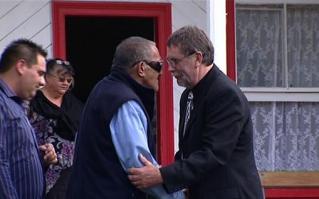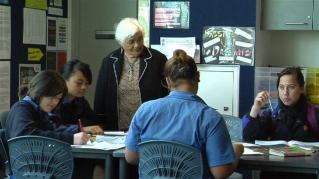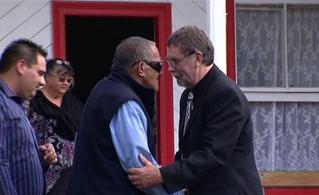Section navigation

This clip shows what Taihape Area School has done to create links between the school and its community, to establish a partnership, thereby giving effect to the requirements in TheNew Zealand Curriculum (pp 37 and 44) to accommodate local needs and consult with the community. The idea of such a partnership aligns with Ka Hikitia, the Ministry’s Māori Education Strategy, which highlights the critical role that whānau play in the education of their tamariki.
Questions / Things to think about / Activities
1. The principal of Taihape Area School comments that ‘iwi are long termers’ and ‘they're going to be here to the end ... a long-term presence in the school’. How can we create ‘productive partnerships’, so that we are working together with students and their whānau to produce better outcomes long-term?
2. Ka Hikitia, the Ministry's Māori education strategy, states that parents and whānau play a critical role in supporting their children's learning. How can we increase whānau involvement at our school, so that whānau are genuinely valued as partners?
3. A literature review by Tahuri (2007) on the effective engagement of Māori whānau (in English medium education) highlights some key characteristics, namely:
- recognition of Māori as equal partners, with their unique and rightful place (mana whenua)
- validation of Māori culture (tikanga)
- fostering of sustainable partnership relationships (whakawhanaungatanga)
- doing the right thing, in a collaborative way (te mahi tika)
- sharing responsibility and working together (ma te katoa te mahi)
- bringing about the desired outcome/shared vision (of Māori students realising their potential), through collaboration and negotiation (ma te mahi tahi ka ea.)
What does this look like in our school?
4. Biddulph et al (2003) reported that it was sustained parental involvement, focused on learning activities/tasks, that improved children's level of achievement, not simply parents being on a school board/committee. What is happening in our school to ensure real and lasting change?
5. What can we do to discover what aspirations our school whānau have for their tamariki?
6. How can our school demonstrate to whānau a genuine willingness to establish an equal partnership that values the respective strengths of each partner, while working together to achieve shared goals?
7. What evidence is there that shows what works for Māori students in terms of whānau engagement? (See for example pp 20, 32, 44, 47-49, 50 in Key evidence: Ka Hikitia about engaging parents.) How can we apply this evidence in our school?
8. The principal of Taihape Area School provided strong leadership to effect change (both attitudinally and pedagogically.) How does our leadership team help to make whānau/student aspirations real?
Filed under: Productive partnerships | Identity Language and Culture | Effective leaders





